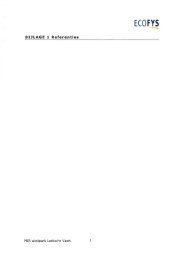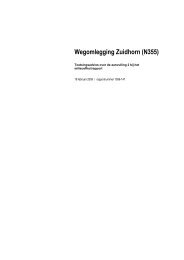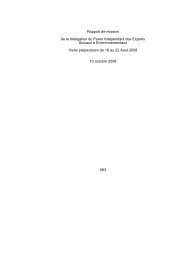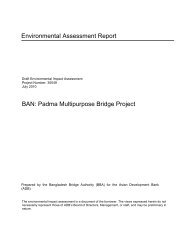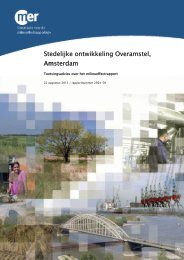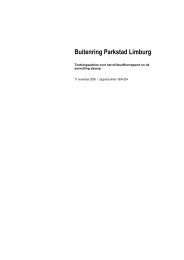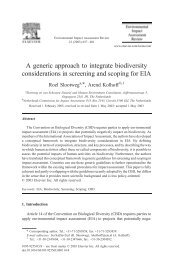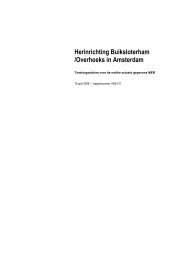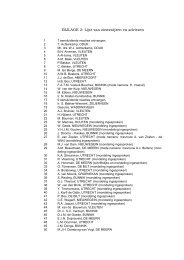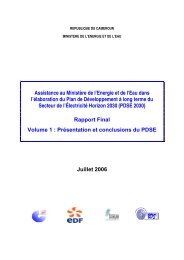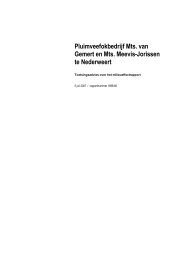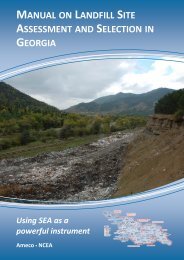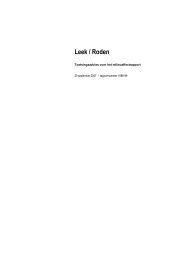Scoping Advice for the Dutch IWRM Support Programme Rwanda
Scoping Advice for the Dutch IWRM Support Programme Rwanda
Scoping Advice for the Dutch IWRM Support Programme Rwanda
Create successful ePaper yourself
Turn your PDF publications into a flip-book with our unique Google optimized e-Paper software.
potential downstream floods) and more reduced base flows (and potential downstream draught). Itis unclear whe<strong>the</strong>r <strong>the</strong>se hydrological changes are taken into account.7. The NCEA concludes that <strong>the</strong> current master plan development process may overlook importantwater related environmental/ecosystem services. As a result, some uses may be neglected,potentially creating conflicts, which <strong>IWRM</strong> ought to avoid and manage. This may be solved by aparticipatory planning process at catchment level (see also paragraph 3.3).2.3.3 Master Plan Validation ProcessThe Master Plan process is divided into two phases:- Phase 1 (diagnostic phase): inventory supply and demand, per (sub)catchment and sector andwater resources potential; will take place between <strong>the</strong> end of May 2012 and March 2013, with<strong>the</strong> presentation of <strong>the</strong> draft Diagnostic Report.- Phase 2 will take place between May 2013 and October 2013. It includes: mapping of waterusers, water demand analysis, opportunities & threats analysis, water governance, allocationand conservation.The draft Master Plan, which is <strong>for</strong>eseen <strong>for</strong> June 2013, will be subject to a validation processinvolving <strong>the</strong> various relevant departments. As <strong>the</strong> plan itself appears to be developed in relativeisolation by <strong>the</strong> consultants, this validation process seems an important step in ensuring howownership will be felt by <strong>the</strong> RWRD after finalisation. Whe<strong>the</strong>r <strong>the</strong> validation process will beeffective is not yet clear.The Master Plan will suggest measures to be taken to maintain equilibrium between supply anddemand. The inception report states: “<strong>the</strong> options are overwhelming and should be considered on<strong>the</strong> basis of <strong>the</strong>ir economic, social and environmental merits”. It is not completely clear whe<strong>the</strong>r<strong>the</strong> plan will consider various alternative options or that it will provide one best option. Variousscenario’s will be used.8. The NCEA concludes that <strong>the</strong> master plan validation process would merit <strong>the</strong> use of SEA as atool to provide independent in<strong>for</strong>mation to <strong>the</strong> decision making process and allow <strong>for</strong> <strong>the</strong> requiredownership by <strong>the</strong> RWRD and o<strong>the</strong>r parties.2.4 From conclusions to recommendationsIn <strong>the</strong> previous paragraphs, <strong>the</strong> NCEA has drawn several conclusions when it comes to <strong>IWRM</strong> in<strong>Rwanda</strong>. In this paragraph, <strong>the</strong> NCEA provides recommendations on how to act upon thoseconclusions. These recommendations are meant to in<strong>for</strong>m <strong>the</strong> combined SEA and planningprocess <strong>for</strong> <strong>the</strong> EKN’s <strong>IWRM</strong> support programme, as <strong>the</strong>y provide points of departure <strong>for</strong> supportto <strong>IWRM</strong> in <strong>Rwanda</strong>.On <strong>the</strong> policy and institutional framework <strong>for</strong> <strong>IWRM</strong> (paragraphs 2.1 - 2.2), <strong>the</strong> NCEA concluded:1. … that <strong>Rwanda</strong> has made swift and consistent steps in <strong>the</strong> development of an <strong>IWRM</strong> policyframework at national level, following internationally acknowledged principles of <strong>IWRM</strong>,11



